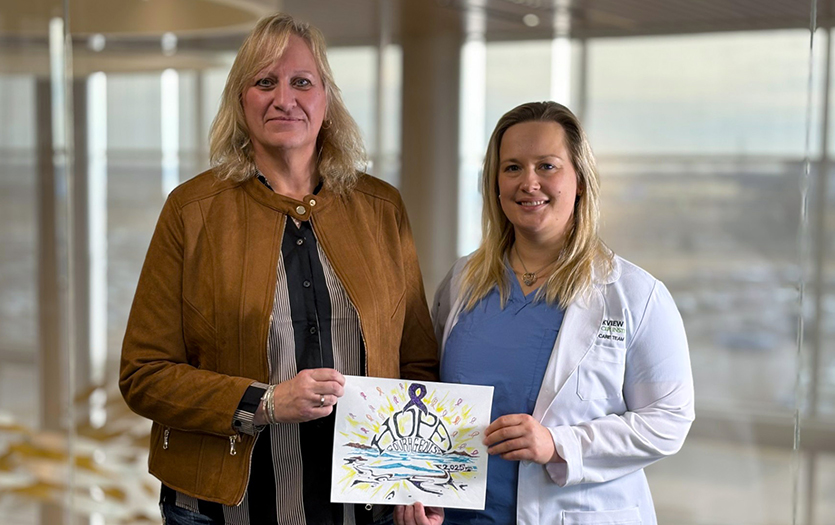
Warmer temperatures and more sunlight make May a perfect candidate for Melanoma Awareness Month. Because this form of skin cancer can be fatal, it's important to know how to prevent and recognize the signs. Debi Kennedy, community outreach coordinator, Parkview Comprehensive Cancer Center, offers her tips for detection, prevention and everything you need to know about staying safe in the sun this season.
Precautions: Slip, Slop, Slap
Protect your skin from the sun by slipping on a shirt, slopping on a hat for those ears and noses, and slapping on sunglasses to protect your eyes. Never wear any sunscreen less than an SPF (sun protection factor) of 15 – anything less will not protect you from both the UVA and UVB rays of the sun. Those who have naturally red or blond hair or have fair skin should use an SPF of 30 or higher. The FDA has proven there is no benefit to anything higher than an SPF of 50.
The most important thing with sunscreen is to cover all areas, including hands and tops of feet, ears and nose. Reapply every two hours unless you are in water or sweating heavily. Then you may need to reapply more often. Apply sunscreen 15-30 minutes before you go out in the sun. Babies under 6 months old should be kept out of the sun. The sun is at its hottest from 10 a.m. to 4 p.m. Use lip balm with SPF 15 or higher to protect your lips.
Warning signs to look for: ABCD
Asymmetry – One half of the spot does not match the other half.
Border – Normal moles are round or oval with sharply defined borders. Melanoma may be uneven, blurred or notched.
Color – Common moles are one color throughout, melanomas may have several colors or an irregular pattern of colors.
Diameter – If the spot is over ¼ inch or if you notice the spot growing. Also, be aware of a sore that doesn’t heal or a change in sensation (itchiness, tenderness or pain).
Common misconceptions
-
The sun is out 365/366 days a year whether it is cloudy, snowing, sunny or raining; it can affect your skin every day.
-
You can tan using sunscreen. The sunscreen protects your skin from the UVA and UVB rays.
-
Tanning beds expose your skin to damaging ultraviolet light. Research has shown that using a tanning bed before the age of 30 increases a person’s risk for melanoma by 75 percent.
-
Skin cancer is one of the most common and preventable types of cancer, avoidable in 1 in 5 cases, according to ACS (American Cancer Society).
-
Skin cancer can be fatal. Melanoma, the most deadly of all skin cancers, can be fatal if not treated early.
-
The ultraviolet rays are color- and age-blind. It doesn’t matter your skin color or your age; if you don’t protect your skin, you can get skin cancer.
Dress to protect
Clothing with SPF can help protect your skin, but remember to apply sunscreen to all exposed skin. Wearing a wide-brimmed hat can protect your face, ears, nose and scalp (your scalp can burn under your hair).



